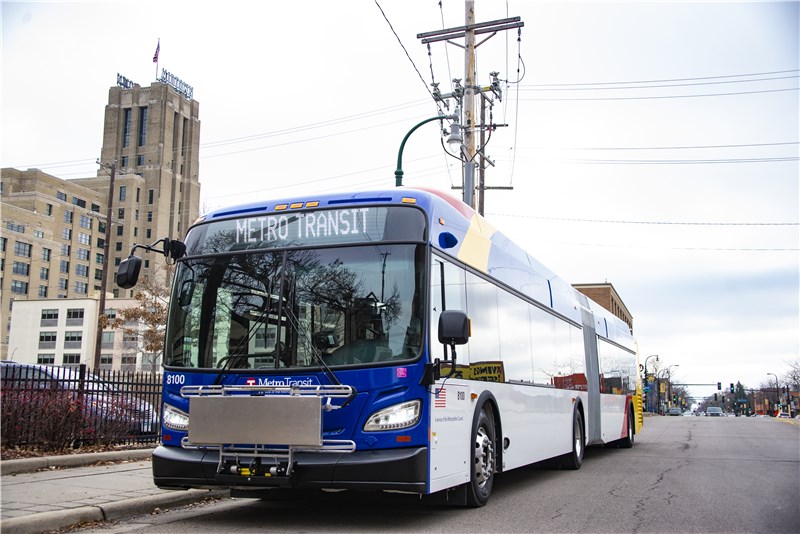
Opening in 2025, the lines will put 220,000 more people within 10 minutes of a BRT line station
For the first time in the region’s history, construction on four transitway projects is underway at the same time. This includes two new bus rapid transit lines that will significantly improve service in Edina, Minneapolis, and Saint Paul and strengthen connections to existing and future light rail lines.
“Everyone benefits when we invest in better bus service,” General Manager Lesley Kandaras said. "Riders get to their destinations faster and more reliably, streets become safer and less congested, and access expands to jobs, entertainment, shopping and other destinations.”
Over the coming months, crews working on the METRO B Line and METRO E Line will build enhanced stations, paint bus lanes, and make traffic signal adjustments that help buses spend less time waiting at red lights, among other improvements.
The B Line is scheduled to open in June 2025, largely replacing the region’s busiest local bus route, Route 21. Construction began last year on the east end of the route, along Marshall and Selby avenues in Saint Paul. This year’s construction will be focused along West Lake Street.
The E Line will open in December 2025, largely replacing Route 6 and operating on France, Hennepin, and University avenues. Construction in the coming months will be focused largely along France Avenue and in Linden Hills.
Combined, nearly 220,000 people live within a 10-minute walk, bike, or roll of B Line and E Line stations; more than 1 in 10 households on these corridors does not have access to a vehicle.
Support to be provided throughout construction
During construction, lanes, intersections, and sidewalks will be closed intermittently. Construction will be staged to preserve access, and signage will be posted to help people know how to get around.
Construction hotlines have been set up, and updates will be regularly communicated through newsletters and in-person outreach. Outreach efforts began when the projects were in the planning and design phases.
While construction will restrict road access, Wild Rumpus Books co-owner Timothy Otte is among those who see the long-term benefits. Otte sometimes uses the METRO C Line and Route 6 to commute to and from the bookstore, located in the Linden Hills business district, where parking is limited.
“As someone who has relied on transit to get around the region, I always roll my eyes when people say it’s going to be disruptive,” Otte said. “Well, sure. But it’s short-term pain.”
Partner coordination maximizing construction benefits
Metro Transit has worked closely with the City of Minneapolis and Hennepin County to get the most benefits and limit construction impacts.
The city is leading efforts to rebuild Hennepin Avenue South while Lake Street will see a range of improvements funded by both the city and county, including new bike lanes in some places, aimed at making the corridor safer for all users.
On the east end of the E Line corridor, the county is making improvements to portions of Hennepin Avenue East and First Avenue NE and University Avenue and Fourth Street SE.
“Wherever possible, roadway and transit improvements should be complementary both in terms of the final product and during construction,” said Katie Roth, director of arterial bus rapid transit projects at Metro Transit. “We and our local partners are doing everything we can to make the most of these generational investments while limiting impacts on those directly impacted by construction today.”
B Line, E Line advance regional METRO network
Including the METRO Gold Line, Metro Transit will open three bus rapid transit lines in 2025. Five bus rapid transit lines are now in service, and plans call for a network of 12 bus rapid transit lines across the region.
Corridors with bus rapid transit service enjoy strong ridership and have attracted new development.
With 12 bus rapid transit lines in service, 625,000 residents (20% of the regional population) would live within a half-mile of a bus rapid transit station. Many of those lines will intersect and connect to existing or planned light rail stations.
“We’re building an integrated system of fast, frequent and reliable transitways that only gets stronger with each additional line,” said Nick Thompson, deputy general manager of capital projects for Metro Transit.